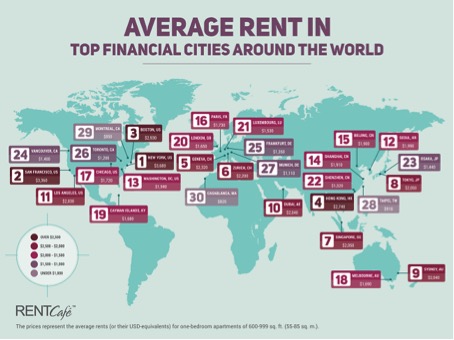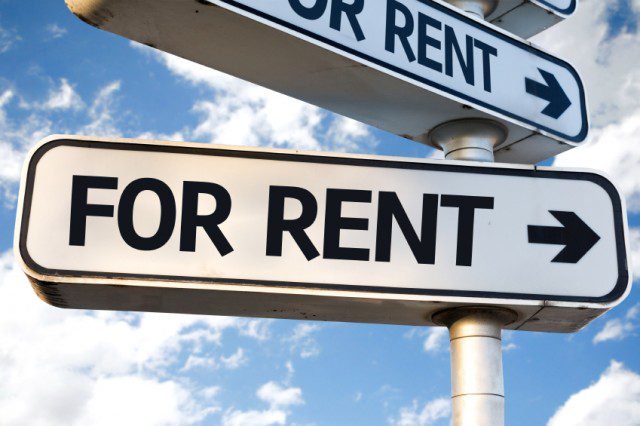Rents are continuing to climb upwards at the fastest rate since last autumn, reaching the highest level seen so far this year, according to the latest Buy-to-Let Index from estate agents Your Move and Reeds Rains.
The average rent price for a home in England and Wales was £793 per month in April.
On a monthly basis, rents have risen by 0.3% – the fastest month-on-month increase since September 2015.
The average rent now stands at 2.4% higher than in April last year, or an extra £19 a month for the typical tenant.
This strong acceleration in rent prices arrives after a fairly subdued month, when rents remained steady between February and March 2016.
The Director of Your Move and Reeds Rains, Adrian Gill, comments: “Anyone looking for a home to rent may now find the better deals of the winter months are over. Landlords are seeing renewed interest and competition between potential tenants, as the spring rental market accelerates.
“Some of the reasons for rent rises are extremely encouraging. Tenants looking to find a property to rent are more likely to be in work, getting pay rises and feeling able to pay their other bills. These wider economic fundamentals are shifting on the side of healthier household finances.”
However, he adds: “But very little has changed in terms of the supply of homes to let. So for many tenants, it’s likely that a large proportion of any earnings growth is swallowed up by higher rents. And the Government hasn’t helped by imposing an extra bill that someone will have to pay on top of this – in the form of the recent Stamp Duty surcharge. To a large extent, it’s likely that penalty will be shouldered by those tenants looking for homes to rent, due only to the fundamentals of supply and demand in the British housing market.”

Rents Reach Highest Level Seen So Far This Year
Record high rents
Rent prices in the East Midlands, West Midlands and East of England have now reached record highs, claims the report.
The greatest annual rent price rises in England and Wales were seen in the East Midlands, where prices grew by 8.5% over the past 12 months to reach £616 per month in April.
In second place is the West Midlands, where prices are up by 6.2% since last year, pushing rents through the £600 barrier. Behind only London in terms of absolute rent price is the East of England, which has recorded an annual rent increase of 4.8% to hit £848 a month.
In monthly terms, the fastest growth was seen jointly in the East of England and the South East, which both experienced rent rises of 1% between March and April.
The North East follows, with rents now 0.8% higher than in the previous month.
Landlord returns and yields
Considering both rental income and capital growth, but before taking costs such as maintenance into account, the average landlord in England and Wales has seen total returns of 10.7% over the past 12 months.
Although this is slightly lower than the 11.4% seen in the previous month, it is higher than the 9.8% returns recorded in April last year.
In absolute terms, this means that the typical landlord has enjoyed a return of £19,538 over the year to April, before any deductions such as property maintenance and mortgage payments are taken into account.
Of this sum, the average capital gain contributed £10,815, while rental income made up £8,723.
Although a recent surge in capital values has boosted total returns for landlords, the same trend has suppressed rental yields slightly for those hoping to become landlords, or those looking to expand their portfolios. As rents rise alongside house prices, rental yields are proving reasonably resistant to increasing purchase prices.
However, the gross yield on an average property in England and Wales is now 4.9%, compared to 5.1% in April last year.
Gill explains: “Yields and returns have been remarkably steady in the face of an onslaught of hostile rhetoric and regulatory hoops. And all else being the same, there is a chance gross yields could rise marginally, to take account of any extra costs and complexities associated with being a landlord – such as the Stamp Duty surcharge.
“More chance is on the way, and landlords will need to take appropriate financial advice on how changes to the tax system could affect them – as well as ensuring that their properties and tenancy agreements comply with every single rule and requirement.
“But this latest imposition is actually not a tax on existing or accidental landlords. Actually, the Stamp Duty surcharge is a barrier to entry. The danger for tenants is that this new rule will prevent new houses and flats to rent coming onto the market. The advantage for landlords in some areas could be less competition. But anyone trying to grow their rental portfolio will now need to spend even more time making the right decision – and as of last month, more money too.”
Decrease in rent arrears
Positively, tenants in England and Wales are now finding it easier to pay their rent on time. As of April, 8.1% of all rent due was in arrears, down from 9.1% in March. However, this still represents a more challenging situation that in April last year, when just 7% of all rent was in arrears.
Over the long term, however, the latest improvement is extremely encouraging. In February 2010, an all-time high of 14.6% of all rent due was recorded.
Gill concludes: “All the signs are right for a strong improvement in tenant finances. Wages are finally showing a bit of exuberance and employment has never been higher. But rents haven’t ever been higher either in much of the country. There is a powerful trend underpinning the affordability of renting for a large majority of Britain’s tenants, but there are also serious shortages of homes to let in all the same places that people want to live.
“Rental arrears reflect this mismatch between supply and demand. Waves of interest from the bulk of financially healthy tenants are capable of pushing up rents across the market. But unless landlords are allowed to respond by investing in new homes, then supply will not quite ever be able to keep up. This is the mechanism that very soon could demonstrate the misguided nature of the latest targeting of landlords from the UK authorities. Tenants will always lose out if the bottom line is a shortage of flats to rent or houses for rent in local markets.”







